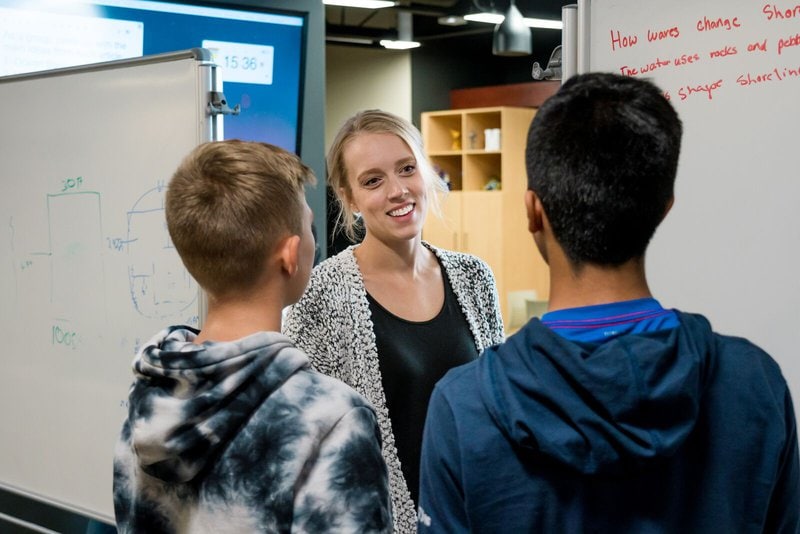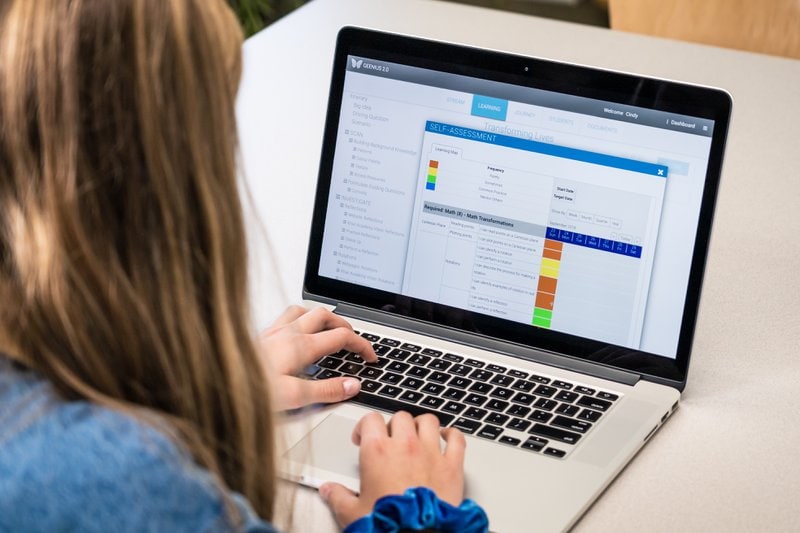Profound Learning is based on students being able to own their learning goals, track their progress, make choices, and find ways to close their gaps. We know that structures for both ownership and empowerment have to be in place to allow students into the learning journey.
Seems clear enough!
But is it clear enough?
Professional Jargon
Education, along with all other areas of expertise, has its own jargon – special words or expressions that are used by a particular profession or group and are difficult for others to understand. Terry Heick in his TeachThought August 6, 2018 article “Why Parents Don’t Understand How to Help” states that: “Jargon is a necessary evil. Simply put, jargon helps us be more specific. Pilots in planes don’t ‘go up’, they ‘gain altitude’. Forwards in basketball don’t simply ‘score’, but rather face up the defender to jab step, finishing with an up-and-under move for an ‘and-one’. They don’t ‘turn towards the basket, they ‘drop step’.”
Profound Learning has its own jargon. Teachers tend to use the word “assessment” while allowing students “tracking” and “customizing” opportunities instead of words that may be more familiar to the previous generation–words like “test”, “marks”, report cards”, etc. The teachers in today’s classrooms are using diverse assessment forms that often involve adaptive learning technologies as they strive to personalize learning.
Oops! There we go again – jargon! Did you get it?

Defining Some Terms for Ownership and Empowerment
Simply put, here’s what you can expect in a Profound Learning classroom this year.
- Curriculum / Learning outcomes, as stated by the Government Ministry of Education, will be communicated to all students in a language that they can understand whether they are in the youngest or oldest grades. They will know WHAT they have to learn to pass the “test”. They find these targets in a Learning Map. Students are introduced to these maps in Kindergarten and continue using them to graduation.
- Choice is a motivator for us all. Being told what to do all day has us all screaming for more control. If we all had to have our morning coffee the same way, our personalized coffee shops would be out of business. We love to be able to choose. Choice motivates. Students are given many opportunities to choose HOW they wish to learn. Sometimes the choice is simply “this or that”. Other times it may be what group you wish to work in or what specific topic is of the most interest to you? Choice can be more complex as when selecting the time frame to complete an assignment or even a more personalized final project. Teachers release choice in ways that help students take more ownership and yet feel empowered to control some aspect of a mandated curriculum.
- The “test” is referred to as formative and summative assessment. Formative assessment is by far the biggest part of learning. It allows students to “form” and “inform” their learning progress during the learning period. It may involve a quiz, or a feedback opportunity to show the teacher what they already know (SMWYK– show me what you know) or even a peer check up. The teacher remains the guide on the learning ride, coaching and conferencing with students and helping them own their learning. Formative assessment gives the student many steps where they receive guidance that leads them to mastery of a learning outcome and empowers students to set goals. Summative assessment sums it all up! It comes at the end of many learning assessments and is often a“test”or a final project for marks.
- Geenius, the digital software used in upper elementary to high school, allows students and teachers to manage learning. That means students and teachers can use an online software to map out a learning project, match student progress with the required learning outcomes, update student progress, and communicate on-line without the restrictions of time and place. This digital software will very soon have the capability of building in personalized review cycles for students to assist them in identifying what they need to review on an individual basis. Geenius, however, does not limit learning to on-line activity. Engaging and empowered learning happens in the classroom. Learning is an experience. It happens in community. It happens when the brain is engaged with interaction, movement, relevance, meaning and emotion. It happens as an Adventure! Part of understanding empowerment and ownership means understanding how on-line digital resources help to manage learning without making learning an isolated self-paced experience.

So how’s your education jargon growing?
Here’s what you can tell others about ownership and empowerment
In a Profound Learning classroom, we use the term “empowerment” to mean giving students some control and choice on how they learn. We use the term “ownership” to refer to students knowing all their learning targets, tracking their progress on their Learning Map, and setting some goals to close their gaps. Although testing is an age old practice and still has a place in the society in which we live, we have begun to guide the students towards mastery by many formative assessment steps that remove much of the anxiety of frequent tests. On-line and self-directed learning are frequently used terms in Education, but it needs to be understood that Profound Learning uses Geenius, digital software, to manage learning. Classroom based Learning Adventures are the vehicle for students to experience learning.
There you go – The Jargon of Ownership and Empowerment!
As you begin this school term, read the on-line teacher notes, look at the Learning Adventures in Geenius, and ask many questions about the jargon of Profound Learning. As Terry Heick says: “The long-term result here should be, if nothing else, a generation of students and parents that have heard all the buzzwords not from the news or second-hand, but from the teachers themselves.”
